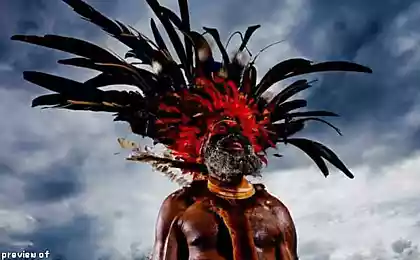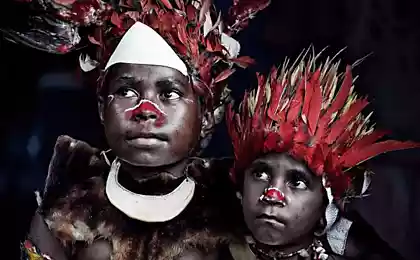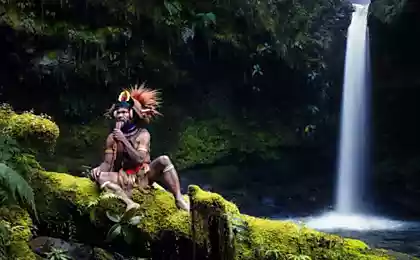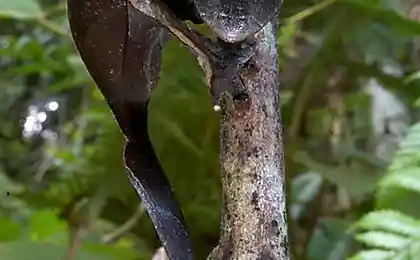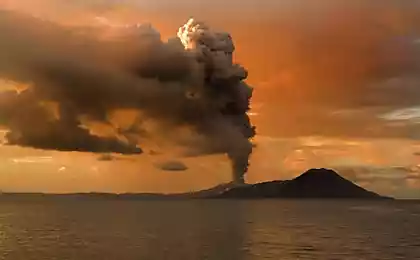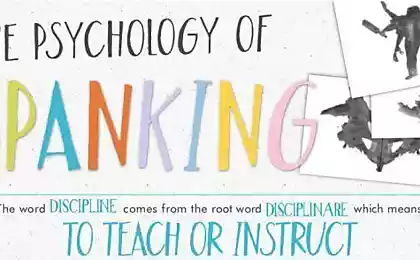1399
Disappearing peoples of Papua - New Guinea
Take a look at the amazing collection of photographs of indigenous peoples of Papua - New Guinea, created by photographer Jimmy Nelson. All photos belong to the project with the speaker called "As long as they have not disappeared." In these photographs the whole philosophy of life and amazing tribes and nationalities. Be sure to look further.
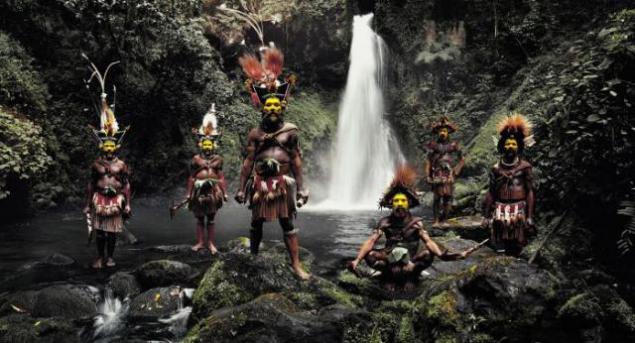
"Knowledge is meaningless until help to become stronger," and "Mouth is nothing to chew on until the hands begin to work" - these sayings, popular among small nations and tribes living in Indonesia and Papua - New Guinea, concluded practically all their life philosophy. These places have given the route of one of the parts of the British expedition photographer Jimmy Nelson (Jimmy Nelson), working on the photo project "Until they have disappeared» (Before they Pass Away)
Huli
Papua - New Guinea
It is believed that the first humans migrated to the island of New Guinea, more than 45 thousand years ago. Today, more than 3 million people (half the population of Papua - New Guinea) live in mountain areas. Many of the local communities involved in inter-tribal conflicts of different scale for thousands of years.
The struggle between the tribes is for the land of pigs and women. Great efforts are being made to impress the enemy. Men Huli, the largest of the local tribes, paint their faces in yellow, red and white color, and are famous for the tradition of making wigs from their own hair. Axe with claw ends chilling effect.



Asaro
Papua - New Guinea
Across the plateau live Nagorno small agricultural clans, different customs and traditions, speak different languages. Famous "Dirt» Asaro first met with representatives of the Western world until the mid 20th century.
According to ancient legend, the men of the tribe were forced to flee from the enemy, and took refuge at night by the river Asaro. At dawn, the enemy saw them rise to their feet, completely covered with mud, and decided that this perfume. Asaro still use dirt and masks to terrify the other tribes.
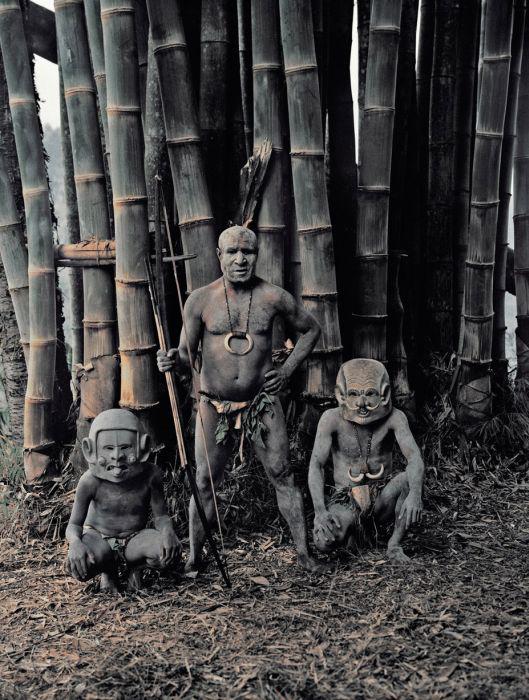

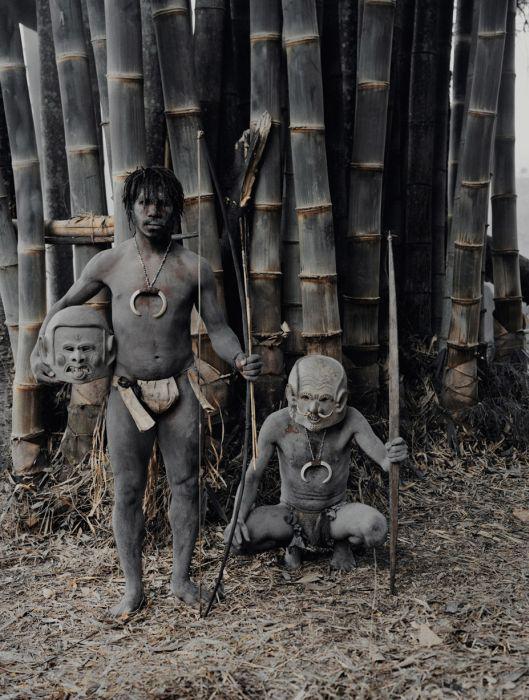
Kalam
Papua - New Guinea
The eastern half of New Guinea gained full independence from Australia in 1975, then formed the government of Papua - New Guinea. The indigenous population is one of the most non-uniform in the world. The first visitors were greatly impressed by the carefully planned gardens in the valleys and ditches. The women of these tribes - very good farmers. The men hunt and fight with other tribes.
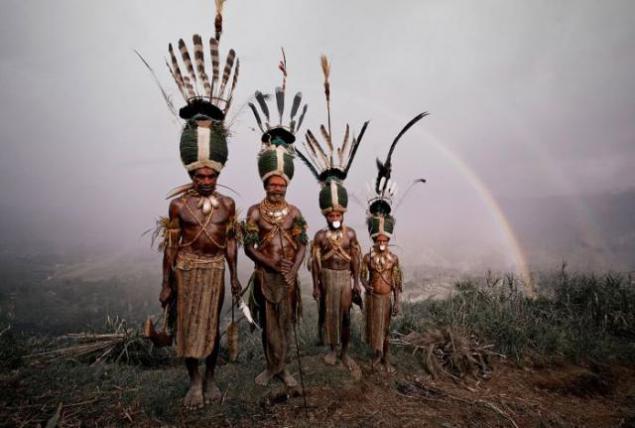



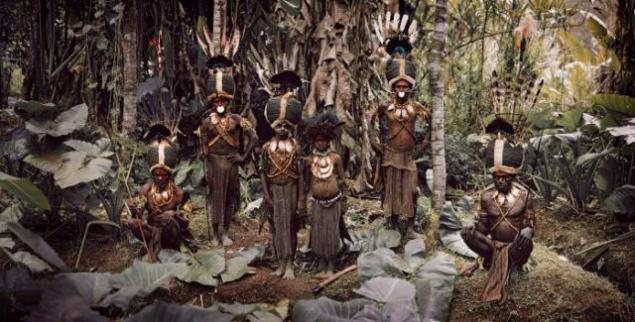
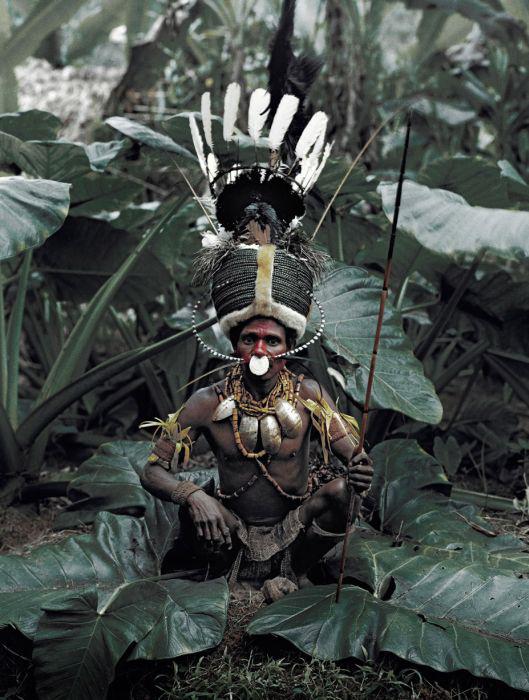

Goroka
Papua - New Guinea
Life is simple in the mountainous villages. There is enough good food, strong families and reverent attitude to the natural phenomena. People live by hunting, gathering plants and crop ... and of course, tribal wars.

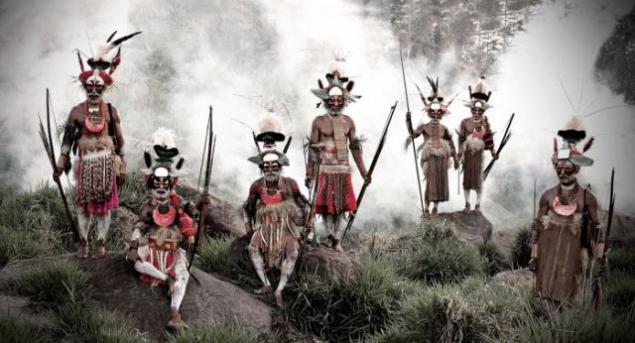








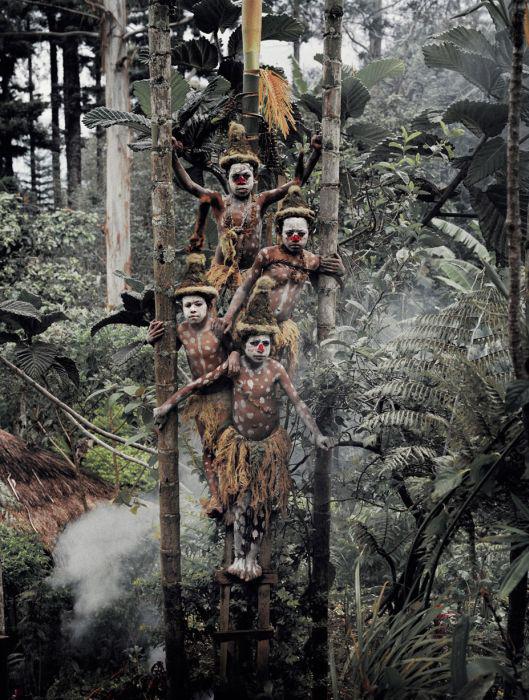
Dani
Indonesia
Baliemskaya Valley is located at an altitude of 1600 meters above sea level on a ridge Jayawijaya Regency, Papua province, located in the Indonesian part of the island of New Guinea. In this valley is home to a tribe Dani. They are farmers and they have an efficient irrigation system. Archaeological studies show that people have cultivated this valley 9000 years ago.
Dani often had to fight for their territory, protecting it from attacks of other tribes. They are called the most terrible in these parts bounty hunters. This is surprising, given the fact that they did not eat their enemies, unlike most of the other tribes of Papua.
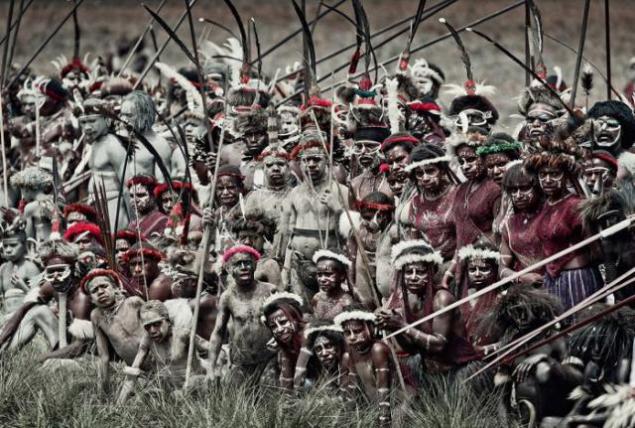




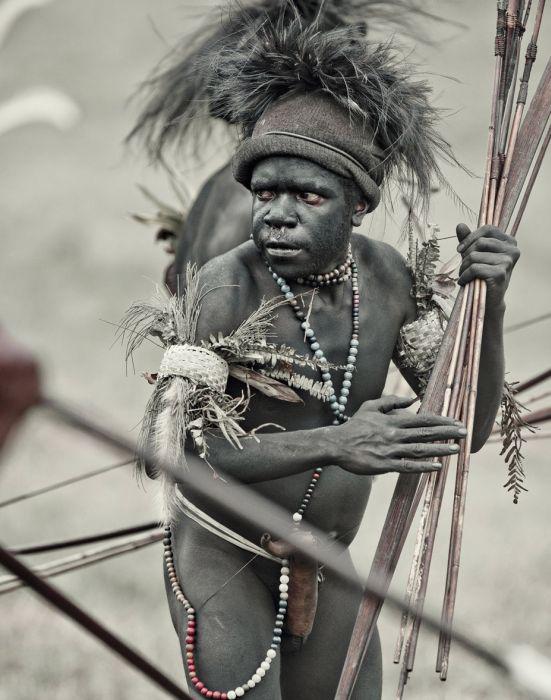
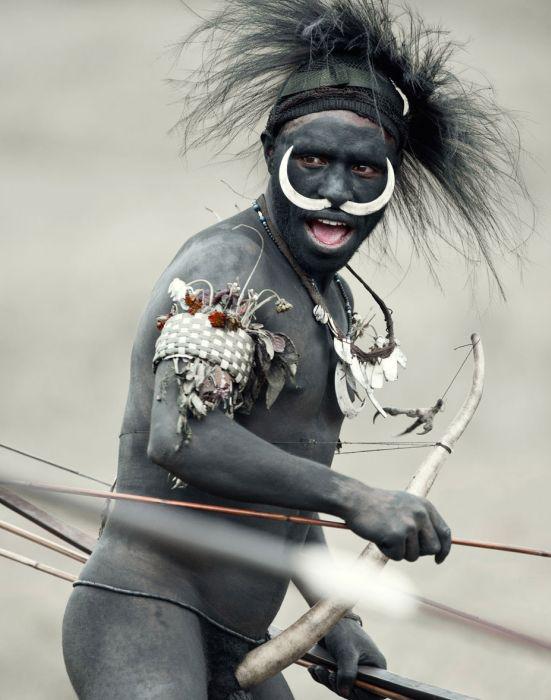
Yali
Indonesia
One of the tribes inhabiting the region Baliemskoy Valley are the "Lords of the Earth» Yali. They live in the virgin forests of the highlands. Yali officially recognized pygmies - men here grow no more than 150 cm.
Papuan tribes, differing in appearance and speak different languages, have a similar lifestyle. They're all polygamists, have similar rituals for important cases. Kotek - original case for the penis, made from the fruit of the dried pumpkin, calabash, is part of the traditional clothes and a sign of tribal identity.







Korowai
Indonesia
To the south of the ridge Jayawijaya Regency is a large area of lowland. There are many rivers, marshes, swamps and mangroves. It is the habitat of the tribe Korowai, people who before 1970 believed that they - the only people in the world.
Korowai are one of the few Papuan tribes who do not wear Kotek. Instead, the men wrapped their personal belongings in the large leaves of native plants, and tightly bound. They - hunter-gatherers living in tree houses. Strictly separate male and female rights and responsibilities.


"Knowledge is meaningless until help to become stronger," and "Mouth is nothing to chew on until the hands begin to work" - these sayings, popular among small nations and tribes living in Indonesia and Papua - New Guinea, concluded practically all their life philosophy. These places have given the route of one of the parts of the British expedition photographer Jimmy Nelson (Jimmy Nelson), working on the photo project "Until they have disappeared» (Before they Pass Away)
Huli
Papua - New Guinea
It is believed that the first humans migrated to the island of New Guinea, more than 45 thousand years ago. Today, more than 3 million people (half the population of Papua - New Guinea) live in mountain areas. Many of the local communities involved in inter-tribal conflicts of different scale for thousands of years.
The struggle between the tribes is for the land of pigs and women. Great efforts are being made to impress the enemy. Men Huli, the largest of the local tribes, paint their faces in yellow, red and white color, and are famous for the tradition of making wigs from their own hair. Axe with claw ends chilling effect.



Asaro
Papua - New Guinea
Across the plateau live Nagorno small agricultural clans, different customs and traditions, speak different languages. Famous "Dirt» Asaro first met with representatives of the Western world until the mid 20th century.
According to ancient legend, the men of the tribe were forced to flee from the enemy, and took refuge at night by the river Asaro. At dawn, the enemy saw them rise to their feet, completely covered with mud, and decided that this perfume. Asaro still use dirt and masks to terrify the other tribes.



Kalam
Papua - New Guinea
The eastern half of New Guinea gained full independence from Australia in 1975, then formed the government of Papua - New Guinea. The indigenous population is one of the most non-uniform in the world. The first visitors were greatly impressed by the carefully planned gardens in the valleys and ditches. The women of these tribes - very good farmers. The men hunt and fight with other tribes.







Goroka
Papua - New Guinea
Life is simple in the mountainous villages. There is enough good food, strong families and reverent attitude to the natural phenomena. People live by hunting, gathering plants and crop ... and of course, tribal wars.











Dani
Indonesia
Baliemskaya Valley is located at an altitude of 1600 meters above sea level on a ridge Jayawijaya Regency, Papua province, located in the Indonesian part of the island of New Guinea. In this valley is home to a tribe Dani. They are farmers and they have an efficient irrigation system. Archaeological studies show that people have cultivated this valley 9000 years ago.
Dani often had to fight for their territory, protecting it from attacks of other tribes. They are called the most terrible in these parts bounty hunters. This is surprising, given the fact that they did not eat their enemies, unlike most of the other tribes of Papua.







Yali
Indonesia
One of the tribes inhabiting the region Baliemskoy Valley are the "Lords of the Earth» Yali. They live in the virgin forests of the highlands. Yali officially recognized pygmies - men here grow no more than 150 cm.
Papuan tribes, differing in appearance and speak different languages, have a similar lifestyle. They're all polygamists, have similar rituals for important cases. Kotek - original case for the penis, made from the fruit of the dried pumpkin, calabash, is part of the traditional clothes and a sign of tribal identity.







Korowai
Indonesia
To the south of the ridge Jayawijaya Regency is a large area of lowland. There are many rivers, marshes, swamps and mangroves. It is the habitat of the tribe Korowai, people who before 1970 believed that they - the only people in the world.
Korowai are one of the few Papuan tribes who do not wear Kotek. Instead, the men wrapped their personal belongings in the large leaves of native plants, and tightly bound. They - hunter-gatherers living in tree houses. Strictly separate male and female rights and responsibilities.

